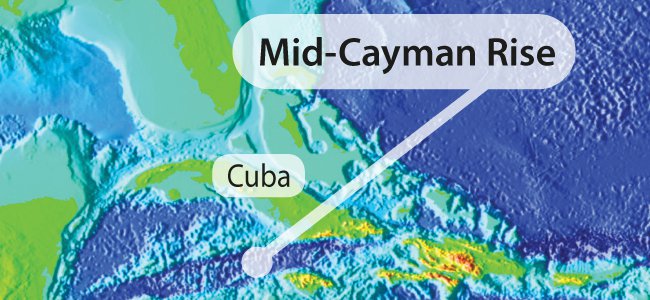
March 30, 2018
Research Highlight
Metabolism and Diversity of Tubeworm Endosymbionts from the Mid-Cayman Rise

The Mid-Cayman rise is an undersea ridge in the Caribbean Sea located at the tectonic boundary of the North American Plate and the Caribbean Plate. Credit: NOAAImage credit: NOAA.
Microbial endosymbionts of two species of tubeworms (Excapria sp. and Lamellibrachia sp.2) from the Mid-Cayman Rise have been characterized, uncovering information about the metabolism and diversity of the endosymbiotic microorganism communities. Samples were collected from an area of low-temperature, hydrothermal diffuse vent flow. The endosymbiotic microbes appear to be from a separate clade than those found in other environments (including the Pacific, Gulf of Mexico, and Mediterranean Sea), and belong to a novel genera, dubbed Candidatus Vondammii.
The paper, “Metagenomic investigation of vestimentiferan tubeworm endosymbionts from Mid-Cayman Rise reveals new insights into metabolism and diversity,” was published in the journal Microbiome. Technology used in this study was developed with support from the Astrobiology Science and Technology for Exploring Planets (ASTEP) element of the NASA Astrobiology Program. ASTEP was an active program element from 2001 to 2014 and supported investigations focused on exploring Earth’s extreme environments to learn how best to search for life on other planets. The types of projects that were funded by ASTEP are now competed under Planetary Science and Technology from Analog Research (PSTAR).